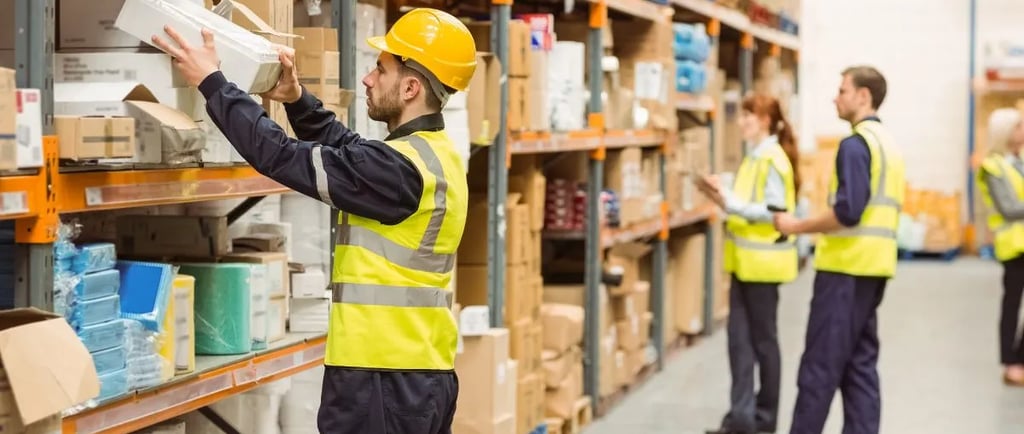Why Do Companies Change Their Packaging
"Discover why companies change their packaging to stay competitive, enhance brand image, and meet consumer demands. Learn the key reasons behind packaging redesigns and how they impact business success."
LATEST STORIESPACKAGING


Why Do Companies Change Their Packaging? Packaging is important in consumer perception of the product and its symbols. In addition to its primary function of protecting products during transportation and storage, packaging is a powerful branding and advertising tool. It is an important point where consumers regularly interact with the product, influencing first impressions and purchase choices. Effective packaging design addresses brand values, size, and meaning, allowing one product to be distinguished from another on store shelves or online platforms. Companies are investing heavily in packaging to create memorable experiences that resonate with their target market and build symbolic loyalty.
The reasons why organizations organize their packaging include motivational strategies based on market dynamics and consumer behaviour. Understanding these motivations provides insight into how firms can adapt to a fair and competitive life in dynamic market environments. By analyzing those factors, we are better able to understand the interactive role of design innovation, consumer preferences and economic factors in shaping the packaging environment in different industries
Enhancing Brand Image
Reflecting updated brand values and meaning, companies frequently change their packaging to reflect changing perceptions of what their brand stands for. This may involve updating the visual elements, including effects, labels, or graphics to increase modernity, sustainability, or other interior values and thus materials users aim to remain relevant and more aligned with their target market.
In addition, teams control their packaging to appeal to changing consumer choice and trends. This means that they want to adopt a relatively simple system, incorporate green elements, or increase product transparency. By adapting to consumer tastes and behaviors, companies can maintain or enhance the appeal of their market segment.
Improved Productivity
Improving usability or convenience is another major motivator for changing packaging. Companies can also redesign packaging to make it easier to use, buy, or deliver products. For example, resealable bottles or unmarried service packaging fulfill the security call for simplicity and portability.
Meeting regulatory requirements or a desire for sustainability also influences the choice of packaging materials. Packaging or environmental regulations often require a company to innovate with new sustainable packaging solutions. By actively addressing these issues, companies are now not only complying with regulations but also demonstrating their commitment to environmental stewardship.
Growing Sales And Market Share
Increasing shelf interest and attracting new customers is the number one goal when organizations are working on their packaging. Attractive designs, shelving techniques and attractive packaging can greatly influence a customer’s choice of products. By increasing visual appeal, companies aim to withstand resistance and draw attention to their products.
Differentiation from the competition in a crowded market is every other factor in creating new packaging products. Unique packaging designs or modern work can set products apart from comparable businesses. This distinction is currently not the easiest to help grab the consumer’s interest but additionally provide logo reputation and loyalty over the years.
Economic Strategy
Reducing manufacturing costs or increasing logistics is a real consideration affecting packaging changes. Companies can redesign packaging to reduce fabric costs, simplify manufacturing processes, or improve transportation efficiency. These efforts help reduce overall costs and improve efficiency, which is critical in volatile markets.
Responding to rising prices or supply chains adds up to better packaging design. Changes in raw clothing prices or supply disruptions may require packaging adjustments to ensure product retention and profitability. By adapting quickly to economic pressures, companies can mitigate risks and balance their operations.
Addressing Environmental Problems
Companies are increasingly adopting packaging changes to address environmental concerns, with which comes an increasing emphasis on sustainability and corporate responsibility
Adopting green products or reducing waste is an important strategy for sustainable packaging. Switching to biodegradable, recyclable, or compostable materials reduces environmental impact over the life of a product. By choosing products that can be innovative and less harmful to the environment, companies contribute to conservation efforts and attract environmentalists
Displaying corporate social responsibility (CSR) through packaging choices is another motivator. By introducing sustainable packaging, teams demonstrate their commitment to sound business practices and environmental management. This now not only supports brand recognition but also matches the customers’ expectations that companies will act and contribute responsibly
Overall, addressing environmental concerns through packaging demonstrates a comprehensive corporate approach to integrating sustainability into retail office operations and consuming customers and meeting the evolving needs of our organization and regulators.
Finally, teams often sort through their packaging for strategic incentives. First, play a key role in enhancing the symbolic image by reflecting contemporary values and calling for a shift in consumer choice. Secondly, it allows packaging innovations to increase performance through intensive management and meet sustainability regulations or targets. Third, increasing sales and market presence through increased shelf attractiveness and differentiation from competitors remains a major motivator Lastly, economies of scale well such as tariff reductions affect chain demand conditions of logistics and packaging decisions.
Looking ahead, future developments in packaging have every potential to increase awareness of innovation and sustainability. Advances in materials technology can also lead to environmentally friendly packaging products such as biodegradable or recyclable materials. Additionally, technologies such as smart packaging should change how consumers protect, track and interact with products. Sustainability will be a riding force, with many businesses embracing the circular economy concept, striving for carbon neutrality in their packaging processes and focusing on consumer demand and technological advances companies may not be able to comply with requirements are handled well but fantastic logo retention, environment -And they can feed the managers
